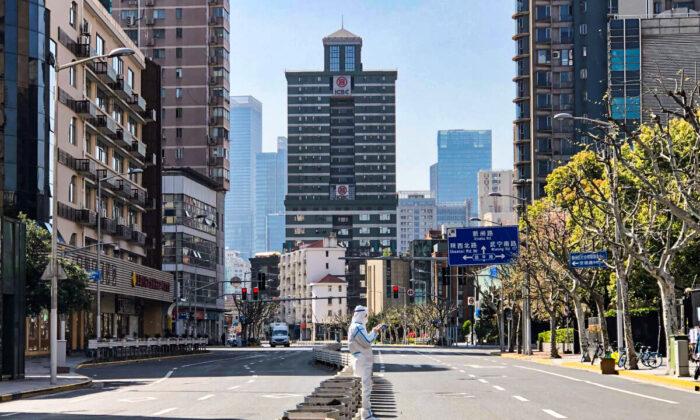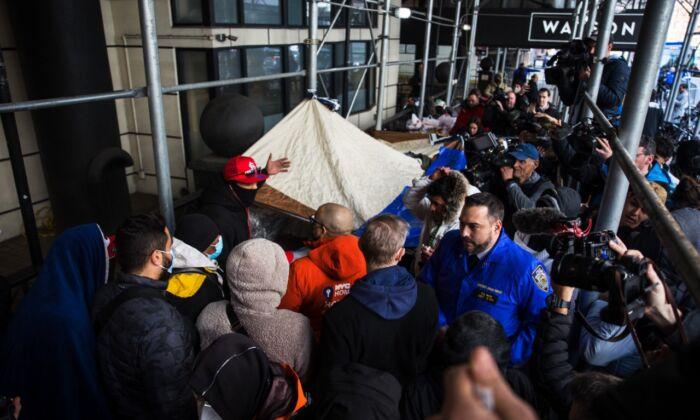China’s economy slowed in March, recording a contraction in both domestic consumption and factories activities as Beijing’s newest round of sweeping COVID-19 lockdowns began to take their toll across the country, official data show.
Yet a separate statistical release on retail sales and the jobless rate in March took the shine off the growth numbers under China’s highly costly COVID-19 measures.
Beginning in March, a traditionally busy hiring season in China as people flock back to work after the Lunar New Year holiday, the country has struggled to curb its worst Omicron virus variant outbreak thus far, which stemmed from Shanghai and Jilin Province.
Unlike most other countries that are trying to cope with the virus, China rolls out mass testing and stay-at-home orders wherever clusters emerge, under a strategy known as “zero-COVID.” In Shanghai, growing COVID-19 flare-ups have broken the city’s logistics chains, clogged highways and ports, stranded workers, and shut down countless factories. Most e-commerce sites have had to suspend new orders for local consumers.
Shanghai has the largest GDP of all Chinese cities, at 4.32 trillion yuan ($680 billion) in 2021, and has the world’s third-largest stock market by market capitalization.
“The economic loss in one day of Shanghai’s full-scale lockdown may go beyond 10 billion yuan [$1.6 billion],” Chinese independent economist Gong Shengli told The Epoch Times on April 18. “The suspension of flows of logistics, people, capital, and production [in Shanghai] is a devastating blow to the economy.”

Retail sales across the country contracted the most in March on an annual basis in the past two years, falling 3.5 percent, compared to a 6.7 percent growth in the first two months. China’s nationwide survey-based jobless rate in March recorded a 10-month high since May 2020 at 5.8 percent, while the figure in 31 major cities hit 6.0 percent, another record high since 2018.
Industrial production expanded 5 percent from a year earlier, yet down from a 7.5 percent increase seen in the first two months of the year, while fixed asset investment increased 9.3 percent year-on-year in the first quarter, down from 12.2 percent growth in the first two months.
Gong estimated that GDP growth could fall below 4 percent, to around 3.5 percent, in the second quarter, given that authorities have shown little sign of easing its zero-COVID policy, either in Shanghai where daily new cases surpass 20,000, or elsewhere, portending rising downside risks.
“In terms of macroeconomics, April was probably the toughest time for China,“ he said. ”Whether [the current contraction] will ease in May remains a question.”
Beijing’s modest 2022 GDP growth target of 5.5 percent, announced in early March, was also deemed to be “very challenging,” according to Gong, as the first-quarter performance started falling behind.
Such economic disruptions are rippling through the global supply chains affecting goods from electronics to vehicles.
Yet, most workers will have to live onsite under “closed-loop” management, and there’s no clear strategy on how factories will deal with disrupted supply lines and access to markets, with closures ordered by authorities in other cities, along with port and trucking problems.
Vice Premier Liu He vowed to help key industrial firms that need help recovering from disruptions, state-run news agency Xinhua reported on April 18.
Late on April 15, China’s central bank said it would cut the amount of cash that banks must hold as reserves, releasing about 530 billion yuan ($83.25 billion) in long-term liquidity.
Meanwhile, Shanghai’s 25 million people are struggling with loss of income, lack of food supplies, separation of families due to quarantines, and poor conditions in overcrowded quarantine facilities.




